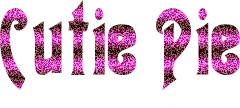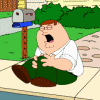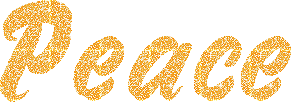JIGSAW READING
By Eva Lai
1. What is effective reading?
Effective reading involves active interaction between reader and text. That is to say, the reader makes use of his knowledge of vocabulary (semantics), sentence structures (syntax) as well as prior knowledge of the subject area (schema) to get meaning from the print.
To help students read effectively, we should NOT just ask them to prepare the reading text at home, we should NOT just explain the whole passage to them, and we should NOT just get them answer the comprehension questions in the course book. We should, on the other hand, give them a purpose to read. One way of giving them a purpose is to get information for use, whatever that use may be.
2. What is jigsaw reading?
Doing Jigsaw Reading is like playing with a jigsaw puzzle. Each student in a group is given part of the story to read. He has to read and comprehend it all by himself in order to report to other members of the group. After each member has reported the different parts of the story, the whole group work together re-arranging the parts to recover the original story.
3. How to work with jigsaw reading texts?
We can use any coherent passage to create a jigsaw reading text. But it is more interesting if we use short stories our students can read independently, i.e. without the help of the teacher or the dictionary.
We can divide the story up in between episodes. For example, having divided the story into 4 parts, we make copies so that each student is only allowed to read 1/4 of the story. To make the activity more exciting, we can turn it into a competition: Ask students to form groups of four. Give each group Part 1 to Part 4 of the story. Tell them to read, to take notes it necessary, and to report orally to the group after reading. The group that can reconstruct the story back to its original is the winner.
4. What kind of jigsaw can we do in primary classes?
In lower primary, we can use sentences to do jigsaw. Instead of breaking a story up, we can break up a sentence into short chunks at the meaning boundaries.
Example:
The noisy dog/barked loudly/ in the middle of/the night.
In upper primary (or for some students in junior secondary), we can ask them to rearrange jumbled sentences to form a story.
Example:
1. That was why he could not read at the age of ten.
2. He went into the women's toilet.
3. He sat on a bench.
4. People told him to wash his hands in the toilet.
5. Tom hated reading.
6. One day, Tom went to the park.
7. He made his hands very dirty because he could not read the sign "WET PAINT".
8. He walked to the toilets.
9. He was caught by the police.
10. He could not understand the words "MEN" and "WOMEN".
The right order should be : 5,1,6,3,7,4,8,10,2 and 9.
5. What kind of jigsaw can we do in secondary classes?
In secondary classes, we can break up short stories into meaningful chunks each consisting of several paragraphs. We can put the setting of the story as Part I, the first episode as Part II and so on. For example, in a story by Bill Lowe in TWIST IN THE TALE, we can have Jane searching for asparagus to prepare dinner for Jack as Part I; Jack being away in Manila as Part II, the voice from the telephone saying he will never come back as Part III, and Jane being heartbroken as Part IV. As there is a twist in the tale, we can ask students to supply a surprise ending after they have reconstructed the four parts of the story. It would be interesting to compare the students* versions and that of the author*s : a wrongly connected telephone call for Jane.
6. What can we achieve in doing jigsaw reading?
We can give students a feeling of satisfaction --- the satisfaction gained at the completion of a task. In the above examples, students read with a purpose : to transfer information to their friends to reconstruct the story.
We can also check comprehension by asking a group to re-tell the story to the class. We can then briefly analyse the text, e.g. quote connectives, cohesion markers, or flow of ideas to illustrate why Part II should follow Part I. We can throw in a bit of story grammar : the setting, the theme, the plot, characters, resolution,etc. By familiarizing students with story grammar, we can help them read more effectively as they have a better schema to rely on.
www.hkptu.org
Analysis:
1. Firstly, the objective of jigsaw reading is to stimulate student's mind to think creatively and freely. We are given task to reconstruct the short story that had been twisted and turn. It also instill cooperation between member of the group in order to solve the solution. If we didn't cooperate with each other, we can't completed the task successfully.
2. It also has advantages in improving our reading ability, whether we fully understand the story or not. It also tested our speaking ability when we have to retell the story to the others. On the other hand, it stimulate our reading and speaking skill synchronously.
3. Jigsaw reading is simple yet fun and interesting task to do in the classroom. So, if you feeling boring, just do the jigsaw reading activity in your classroom.
READING FOR INFORMATION
Animals that Hover
New studies on bats and bluegill sunfish add to scientists' knowledge of a rare and enviable trait
By Matt Ransford Posted 03.04.2008 at 2:51 pm 1 Comment
The hummingbird is an animal that by all rights shouldn't be able to fly. Its wing movements are not at all like that of other birds. But not only can they fly, they're so good at it that they're the only species which can fly backward. They're also one of the few—but not the only—that can hover. And in the past week alone, two new studies on hovering animals have been made public. One is on bats and the others on the bluegill sunfish.
A team of researchers from Drexel, MIT, Harvard, and George Washington University have been studying the bluegill sunfish's ability to hover. By using only its pectoral fins, the fish can hover and rotate or move forward and come to a controlled stop. The motion was discovered by filming the fish in a tank while introducing tiny particles to reveal the trajectory of its fins in the water. The sunfish moves its pectoral fins in an unusual "cup and sweep" motion, which produces no drag. The team is using the data to build a mechanical spandex fin for submarines in the hopes of increasing their mobility in the water.
Researchers at Lund University in Sweden, meanwhile, have been studying a similar ability in bats. Using a specially constructed wind tunnel and fog as tracer particles, the scientists trained the bats to fly from one end to the other and videotaped the results. They discovered the bats were able to generate an unexpected amount of lift by changing the curvature in their wings, allowing them momentarily to hover.
Analysis:
This article that I found in the web, www.englishpage.com under content, Reading Room is about the hummingbird and oth that can hover. This article is suitable for whom that looking new information about the hummingbirds. It also good for researchers since it is mentioned that there are new research was done. Thank you. Happy blogging and happy voting...
P/s: Pn.Zaini, I can't attend your tutorial class tomorrow because I going back home early morning tomorrow for election. I'm sorry for that. May Allah bless you.wassalam.
Subscribe to:
Post Comments (Atom)








2 comments:
Hi Salman,
Your first posting on jigsaw reading is a bit too long because you took the article from the website and didn't summarize the main ideas and points.
For your next posting, try not to copy wholesale ok!
Also, your previous postings (2006)should not be included in your blog.Please remove them.
Happy voting to you too.
pn zaini
thank you for posting jigsaw reading. we were tasked to do a workshop and we had no idea about this strategy. thanks to you! you made it easy for us to understand.
Post a Comment